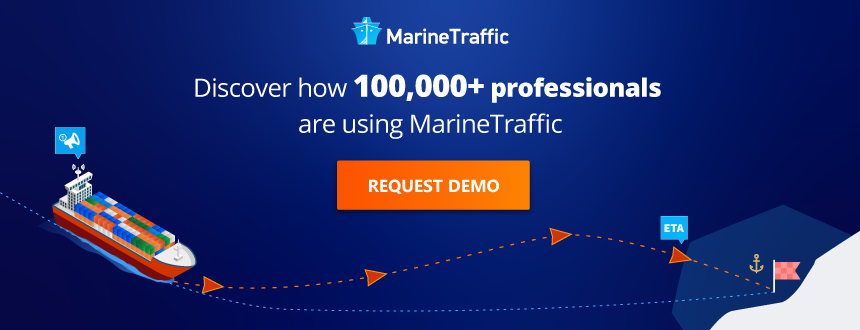
[ad_1]
Photo Credit: Egawa Tomoki, MarineTraffic.com
The cruise sector has taken an unprecedented battering since the coronavirus pandemic started sweeping across the globe last year.
Cruise ship arrivals were down a staggering 55% in 2020. MarineTraffic AIS data shows that just 26,080 passenger ships (>49,999 GT) arrived at ports worldwide last year – a 55% drop from the port calls recorded in 2019 (58,093). Focusing on just June 2020, cruise port calls were down 91% compared to 12 months prior.
Cruise ship arrivals down 55% in 2020
MarineTraffic #AIS data shows that just 26,080 passenger ships (>49,999 GT) arrived at ports worldwide last year, a 55,10% drop from the port calls recorded in 2019 (58,093).
The impact of #covid19 is evident, as seen in this vid below👇 pic.twitter.com/HBHtg2yN8z
— MarineTraffic (@MarineTraffic) February 16, 2021
Tourists stranded on cruise ships became an early media focus as the situation spiralled out of control. The Diamond Princess was left in limbo back in February 2020 as Japanese authorities prevented the vessel from sailing away.
An infectious disease expert at Kobe University Hospital, Kentaro Iwata, boarded during the quarantine. He described the procedures onboard as “completely inadequate”.
Over a year on, the situation for the cruise sector remains delicately poised. However, there are signs that this summer could see a return to some sort of normality.
Since March 2020, the Centers for Disease Control and Prevention (CDC) have blocked cruise ships that carry more than 250 people from sailing in US waters.
But it now appears their tough stance could be softening somewhat and US cruises could resume as early as mid-July. Vaccinations look set to play an integral role in reviving the stricken sector, though.
The CDC clarified its existing return-to-sailing guidelines late last month. They stated that 98% of a crew and 95% of its passengers would need to be fully vaccinated before a vessel could sail again.
The CDC said in a letter to cruise industry officials that: “We acknowledge that cruising will never be a zero-risk activity… and that the goal of the Framework for Conditional Sailing Order’s phased approach is to resume passenger operations in a way that mitigates the risk of COVID-19 transmission onboard cruise ships and across port communities.”
Bahamas Paradise Cruise Line CEO Oneil Khosa is getting ready to welcome passengers. “I think it’s going to come back very strong because all these new initiatives and procedures are going to make cruising even more reliable,” Khosa said.
“The cruise line generates almost 300,000 passengers a year. The direct spending is almost $70 to $80 million,” he added.
It’s amazing that we’ve lived without this for over a year, and it has been an economic loss not only for the cruise line, but for the port, the county.
Florida Governor, Ron DeSantis, revealed four weeks ago that the Sunshine State is taking legal action against the US government in an attempt to resume cruising. “We have tens of thousands of Floridians – not just in this country alone but throughout the state – who depend on the viability of our cruise industry for their livelihoods, for their jobs, for their ability to feed their families,” he said.
MarineTraffic heat maps from the Gulf of Mexico along the US West Coast show a considerable reduction in traffic from August to October 2020, compared with the same period in 2019.


Other industry big-hitters are getting ready to set sail again amid green shoots of recovery and vaccinations becoming more prevalent. Royal Caribbean, Celebrity and Norwegian are kicking off North American cruises in the forthcoming months with ships sailing out of the Caribbean. As they won’t involve departures or stops at any US-based ports the CDC rubber stamp of approval is not needed.
Cruises will be allowed to resume from the United Kingdom on May 17 under step three of the roadmap out of lockdown, which has been implemented by Boris Johnson’s government.
Outside Scotland’s capital city, Edinburgh, three Fred Olsen vessels are being readied for service. The Norwegian company says it has already sold two thirds of tickets for British cruises.
Thomas Rennesland, Fred Olsen’s hotel operations director, says pent-up demand is fuelling a mini boom after a desperately challenging 14 months. “Unfortunately we had to say goodbye to some really fantastic colleagues as the ships were not moving,” he told the BBC. “Then of course we had to start planning the re-entry into service. No one has ever done anything like this before.”
Tom McAlpin, boss of Virgin Voyages, has suggested the safety framework now in place by his organisation is incredibly robust. “I don’t know where else you can travel, where else you can go to a restaurant that has this level of protocols in place,” he explained.
“I think you rebuild trust by creating these protocols so that people feel safe. It’s the right thing for us to do to make people feel comfortable.”

[ad_2]